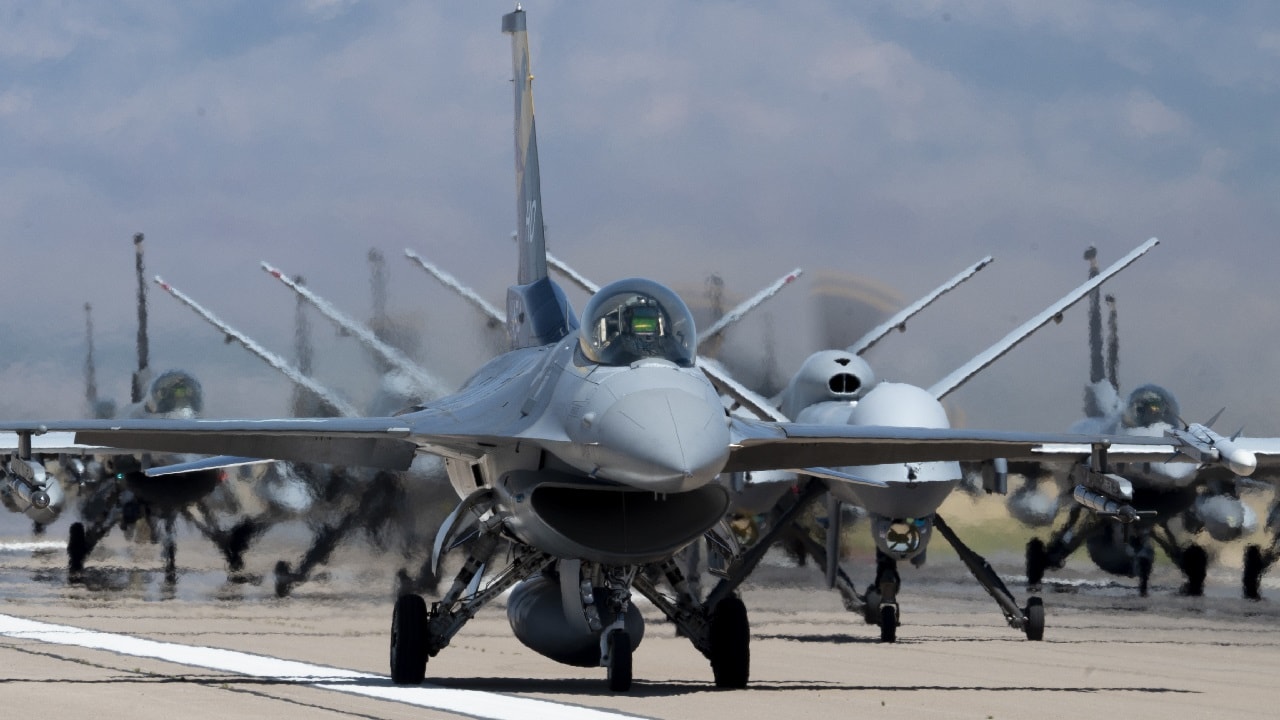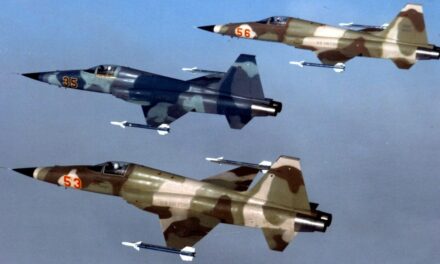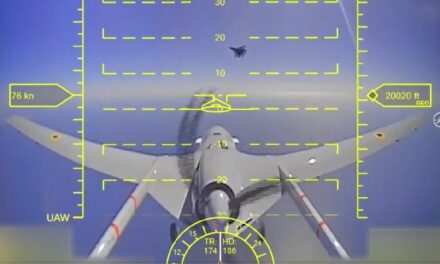We support our Publishers and Content Creators. You can view this story on their website by CLICKING HERE.
Key Points: The F-16I Sufa (“Storm”), a specialized Israeli variant of the F-16D, is a game-changing fighter jet in the Israeli Air Force’s arsenal. The U.S. Air Force has none of these fighters as it is unique to Israel.
-Enhanced with conformal fuel tanks, advanced avionics, and a cutting-edge targeting system, the F-16I boasts extended range, superior agility, and improved combat capabilities. Featuring the Elbit Dash IV helmet sight and upgraded avionics, the aircraft enables pilots to effortlessly acquire and engage targets.
-With a robust arsenal, including Python missiles and precision-guided bombs, the F-16I is a critical tool for both air superiority and ground strikes. Praised by Israeli pilots, the Soufa is a formidable asset in protecting Israel’s security.
F-16I Sufa Is Like Driving a Luxury Car
Missiles and bunker-busting bombs are raining down on Israel’s enemies. What is one of the sources behind this death and destruction? Look no further than the F-16I Sufa (“Storm”) fighter jet that is making terrorists go into hiding, with some of them never emerging alive due to never-ending ground strikes from Israel.
The Sufa is developed from the American F-16D Block 50 and 52 variant of the dependable Fighting Falcon airplane, which has served the U.S. Air Force and many allied countries so well over the decades.
So Many F-16s, So Little Time
The Israeli Air Force prefers the twin-seat version of the F-16. In 2001, it ordered 102 F-16I fighter jets. The Israelis also have a huge number of other types of F-16s (362), the largest arsenal apart from the United States.
New Fuel Tanks and Avionics Housing
The F-16I features conformal fuel tanks that extend its range. This gives the airplane 450 gallons of additional fuel over the F-16D. The fuel tanks are low drag and do not affect the F-16Is handling and maneuverability.
The other difference between F-16Is and other F-16s are the inclusion of the “dorsal avionics compartment.” These appendages house “additional avionics systems, chaff and flare dispensers and the aircraft’s in-flight refueling receptacle,” according to Airforce-Technology.com.
Advanced Cockpit Is Totally Pilot-Friendly
The cockpit is what really sets the F-16I apart from other F-16 variants. It has a helmet sight system that allows the pilot to look at a target and lock it in. This is called the Elbit Dash IV display. Sensors, avionics, munitions are connected to this.
F-16I Sufa. Image Credit: Creative Commons.
The system includes the Elop wide-angled heads up display. This enables a color moving-map and digital video feed to command and control on the ground. Elbit Systems provided a general avionics computer for the F-16I.
Acquisition System for Targets Is Deadly
Elbit also re-imagined the weapons and targeting system. It created a new central mission computer. Data acquisition for targets has been completely re-done. The F-16I uses this set-up to better acquire and lock on to targets effortlessly.
The F-16I Sufa can launch the air-to-air Python 4 and 5 missiles made by Rafael and the beyond-visual-range I-Derby missile plus drop precision-guided bombs.
Israeli Aviators Raved About the F-16I
When F-16Is were delivered and first flown by Israeli pilots they were elated. One aviator described it as a “totally different world.” The pilots thought that although the operational systems would be different in an F-16I, the performance, speed, and agility would be the same. However, they were surprised to find the jet was stronger and more powerful.
“Going over to fly a Sufa jet, after flying the existing F-16, is like starting to drive an American luxury car after you’re used to an old, dilapidated Subaru,” said Major H. (Israeli pilots do not publicize their full names in the media).
The pilot said, “The Sufa is able to fly low and in all weather conditions, almost without manual intervention. It was able to avoid being detected by enemy radar and return home safely from its missions.”

Forty-nine F-16 Vipers and MQ-9 Reapers assigned to the 49th Wing line up on the runway during an elephant walk at Holloman Air Force Base, New Mexico, April 21, 2023. The 49th Wing is the Air Force’s largest F-16 and MQ-9 formal training unit, building combat aircrew pilots and sensor operators ready for any future conflicts. (U.S. Air Force photo by Tech. Sgt. Victor J. Caputo)
The F-16I Sufa is a superior airplane compared to base model F-16s. The Israelis should be proud that they can take a proven airframe and make it better, especially by improving the sensors, avionics, cockpit amenities, and homegrown munitions. Along with the F-35I and the F-15I, this makes for a formidable Israeli Air Force.
Pilots love to fly it, and it has obvious advantages in aerial combat and ground strike capability. The F-16I is just what the doctor ordered. It will serve the Israeli Air Force well as the branch switches over to F-35Is.
This fighter fleet makes for an impressive force to help protect the Homeland and eliminate ground targets. Couple the technology with the skill of the individual Israeli pilot and you have a combination that is second to none in the Middle East. Put Israel’s enemies on notice that the Air Force will not take terrorist attacks lightly and the F-16I is just the fighter ready to avenge Israeli enemies.
About the Author: Dr. Brent M. Eastwood
Brent M. Eastwood, PhD, is the author of Don’t Turn Your Back On the World: a Conservative Foreign Policy and Humans, Machines, and Data: Future Trends in Warfare, plus two other books. Brent was the founder and CEO of a tech firm that predicted world events using artificial intelligence. He served as a legislative fellow for U.S. Senator Tim Scott and advised the senator on defense and foreign policy issues. He has taught at American University, George Washington University, and George Mason University. Brent is a former U.S. Army Infantry officer. He can be followed on X @BMEastwood.

 Conservative
Conservative  Search
Search Trending
Trending Current News
Current News 





